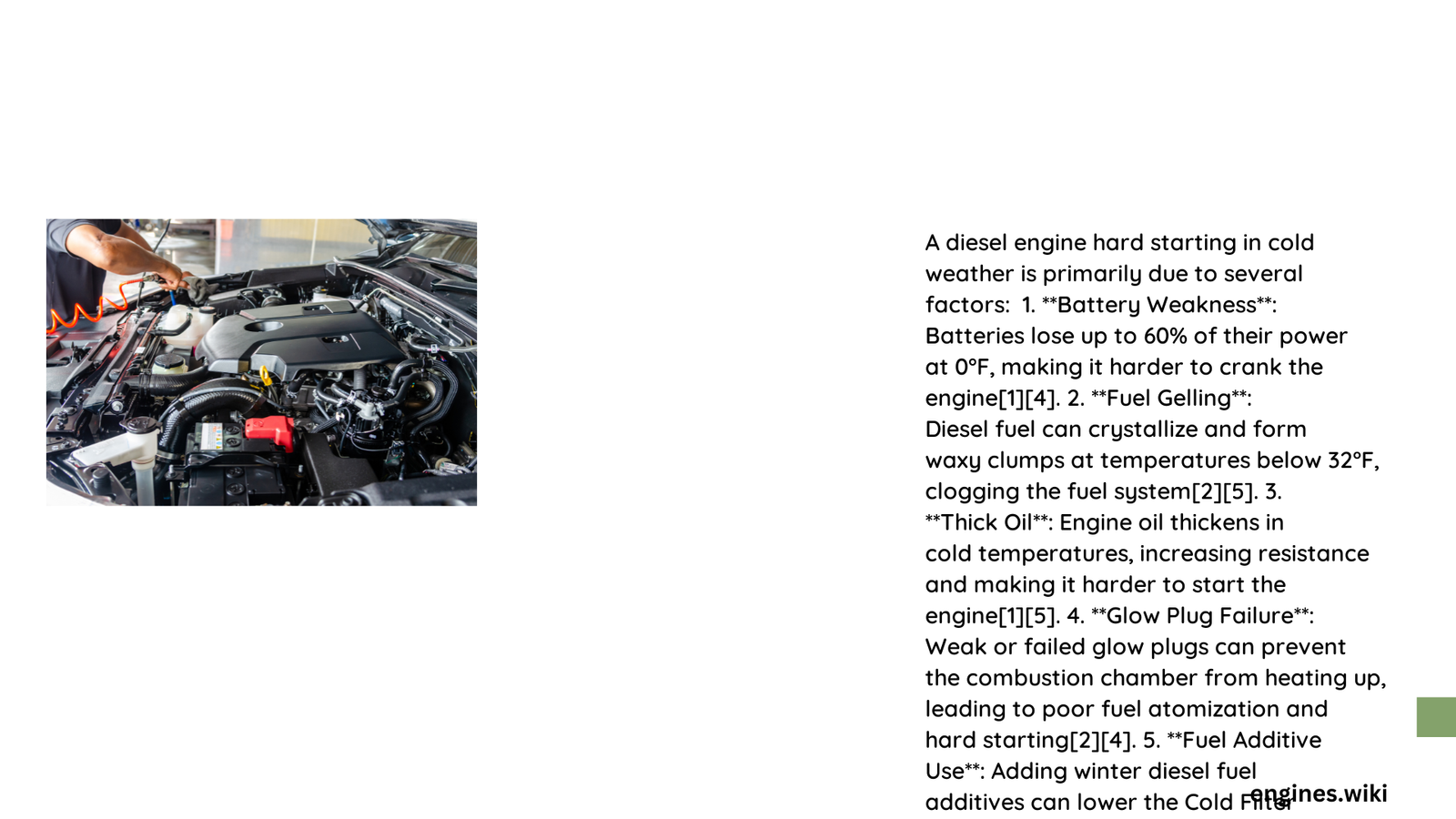Diesel engines often face significant challenges during cold weather, experiencing hard starting conditions that can frustrate even experienced vehicle owners. Cold temperatures create multiple complex interactions between fuel systems, battery performance, and engine components, causing reduced combustion efficiency and increased mechanical resistance. Understanding these intricate dynamics is crucial for maintaining reliable diesel engine performance in low-temperature environments.
What Causes Diesel Engines to Struggle in Cold Temperatures?
Why Do Glow Plugs Impact Cold Starting Performance?
Glow plugs play a critical role in diesel engine cold starting performance. These specialized heating elements warm the combustion chamber, enabling efficient fuel ignition when ambient temperatures drop.
Glow Plug Performance Characteristics:
| Temperature Range | Glow Plug Performance | Starting Difficulty |
|---|---|---|
| Above 40°F | Excellent | Minimal |
| 20-40°F | Moderate | Potential Issues |
| Below 20°F | Poor | High Probability of Hard Starting |
Key Glow Plug Failure Indicators:
- Prolonged cranking time
- White exhaust smoke
- Rough engine idling
- Decreased engine power
How Does Fuel Viscosity Affect Cold Starting?
Diesel fuel’s molecular composition changes dramatically in cold temperatures. As temperature drops, fuel becomes thicker and more resistant to flow, creating significant starting challenges.
Fuel Viscosity Impact Factors:
1. Paraffin wax crystallization
2. Increased molecular density
3. Reduced fuel pump efficiency
4. Compromised fuel atomization
What Battery Conditions Contribute to Hard Starting?
Cold weather significantly reduces battery performance, creating additional starting complications for diesel engines.
Battery Performance Metrics:
– Optimal temperature range: 68-86°F
– Capacity reduction at 32°F: Approximately 50%
– Recommended Cold Cranking Amps (CCA): 600-1000 amps
How Can Diesel Owners Prevent Cold Starting Problems?
Preventative Maintenance Strategies:
- Use winter-grade diesel fuel
- Install fuel additives
- Maintain battery health
- Regularly inspect glow plugs
- Consider engine block heaters
- Use synthetic low-viscosity oils
What Diagnostic Steps Resolve Cold Starting Issues?
- Check glow plug resistance (0.5-2 ohms)
- Inspect fuel filter condition
- Test battery voltage and charging system
- Evaluate fuel quality
- Examine fuel injection system components
Professional Recommendations

Diesel engine owners should prioritize proactive maintenance, especially before winter seasons. Regular inspections, using appropriate winter-grade fuels, and understanding your specific engine’s requirements can dramatically improve cold starting reliability.
Technical Troubleshooting Checklist:
- ✓ Verify glow plug functionality
- ✓ Assess battery condition
- ✓ Examine fuel system components
- ✓ Check engine oil viscosity
- ✓ Evaluate fuel quality
Expert Tips for Reliable Cold Weather Performance
- Warm up the engine gradually
- Use high-quality diesel fuel additives
- Maintain consistent maintenance schedules
- Invest in quality battery and charging systems
Conclusion
Understanding diesel engine hard starting when cold requires comprehensive knowledge of multiple interconnected systems. By implementing systematic maintenance and diagnostic approaches, diesel vehicle owners can significantly improve their engine’s cold weather performance.
